Pliny the Younger Clone 2.0
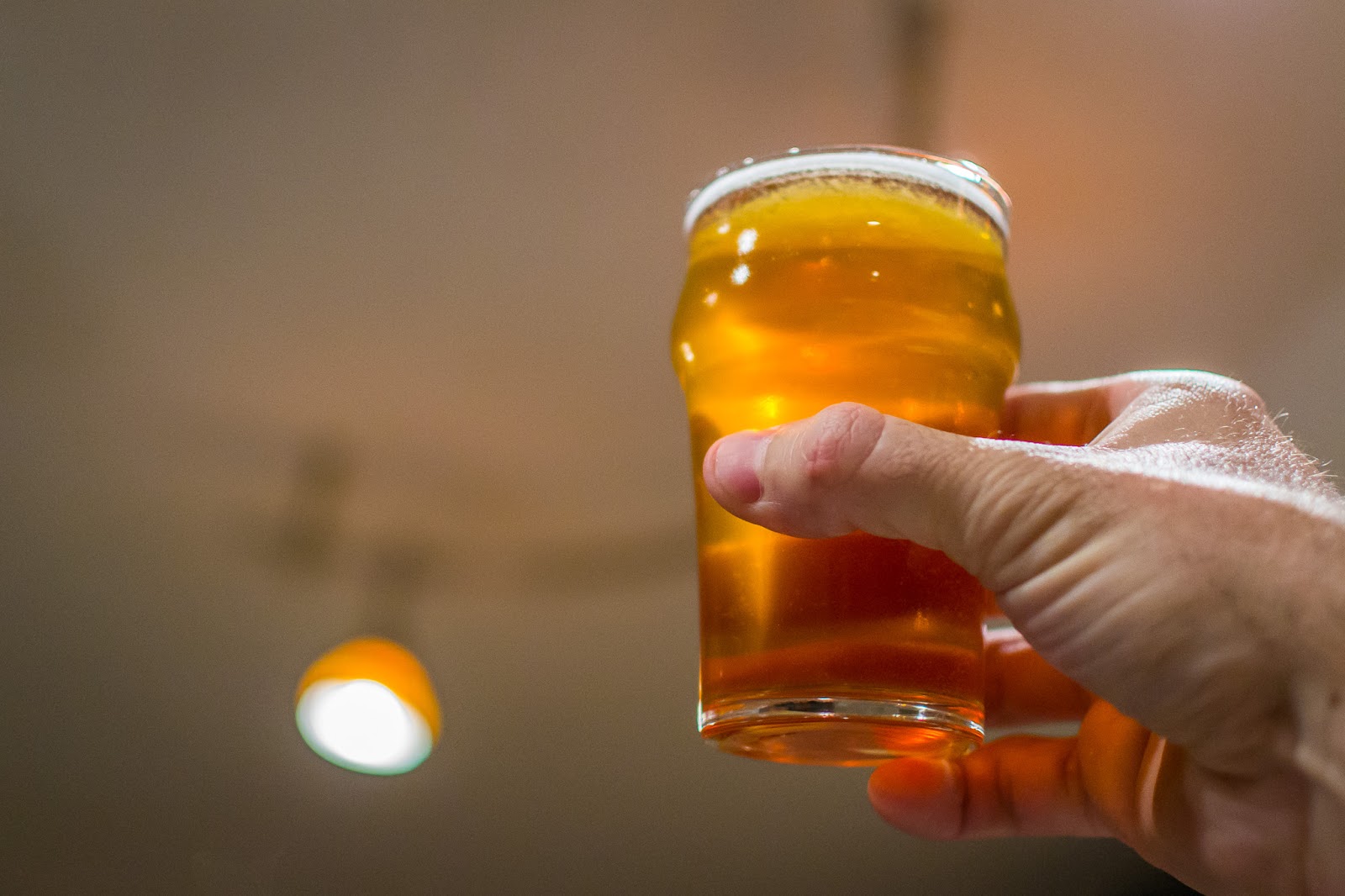
I was going to hold off brewing this for another month or so, but screw it, I want some Younger now! Kristen and I were recently back in California, and made our way up to RRBC to try Younger; it was awesome. So I shuffled around some beers, and I’m brewing this next.
I’ll keep this post on the shorter side because I’ve written about this before. My first clone attempt was here, and it turned out really close. After trying Younger now, I can tell that my clone was a little too fruity, and not quite piney or dank enough. Younger’s Fruity/citrus to pine/dank ratio was pretty much on par with my Elder clone (which also tells me that recipe wasn’t dank enough).
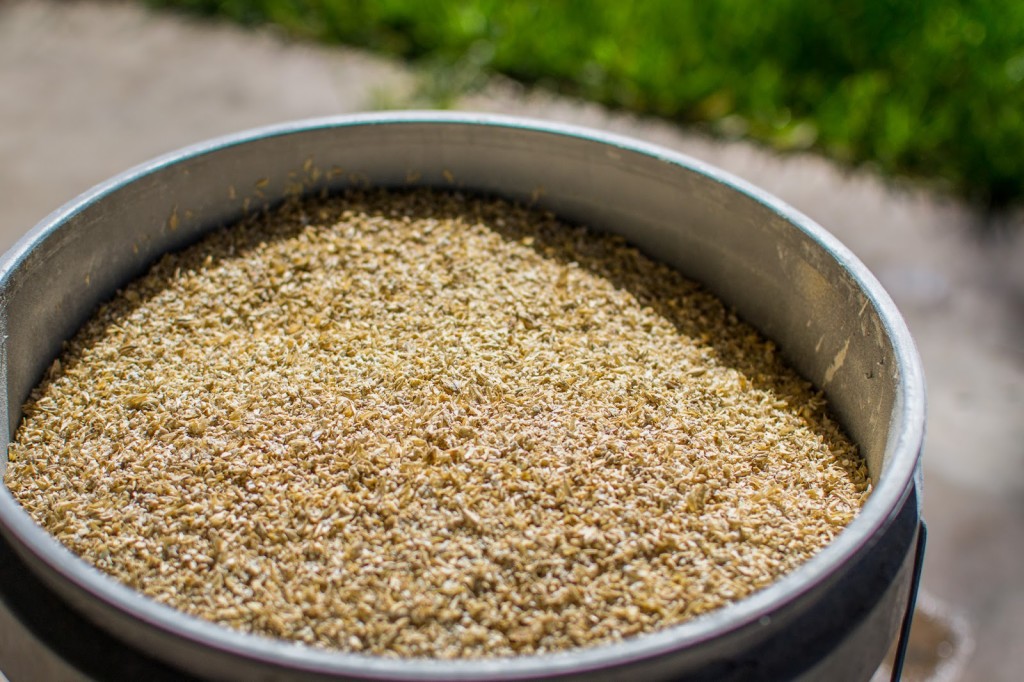 To extrapolate that up to Younger, I grouped the hops into two categories. Fruity/Citrusy (Amarillo, Centennial), and Pine/Dank (CTZ, Simcoe, Chinook). Then calced the ratios of each recipe. My Younger clone was 54% fruity, 46% pine. My Elder clone was 47% fruity, 53% pine. I wanted a little more pine yet, so I revised the dry hop schedule for my Younger clone, and came in at 42% fruity, 58% pine. The odd ball is Warrior (I left it out of my percentages). I read a couple articles that mentioned Vinnie using Warrior in the dry hop for PTY, and this year using more than before. I’m tossing in 3/4oz for shits and giggles. I can’t see it making a massive difference.
To extrapolate that up to Younger, I grouped the hops into two categories. Fruity/Citrusy (Amarillo, Centennial), and Pine/Dank (CTZ, Simcoe, Chinook). Then calced the ratios of each recipe. My Younger clone was 54% fruity, 46% pine. My Elder clone was 47% fruity, 53% pine. I wanted a little more pine yet, so I revised the dry hop schedule for my Younger clone, and came in at 42% fruity, 58% pine. The odd ball is Warrior (I left it out of my percentages). I read a couple articles that mentioned Vinnie using Warrior in the dry hop for PTY, and this year using more than before. I’m tossing in 3/4oz for shits and giggles. I can’t see it making a massive difference.
On the malt side, we’re cutting the C40 down to 2.5%, as my beer was just slightly more orange than theirs. I also decided to cut the dextrose back to 5%, and make up the difference with 2-row. I’ll use a different mash schedule (a la Firestone Walker) to ensure I hit the attenuation numbers I need to. 1.088 OG is the goal, with 1.006 as the final. I’m not sure I’ll get quite that low, but 1.008 or lower will be perfect.
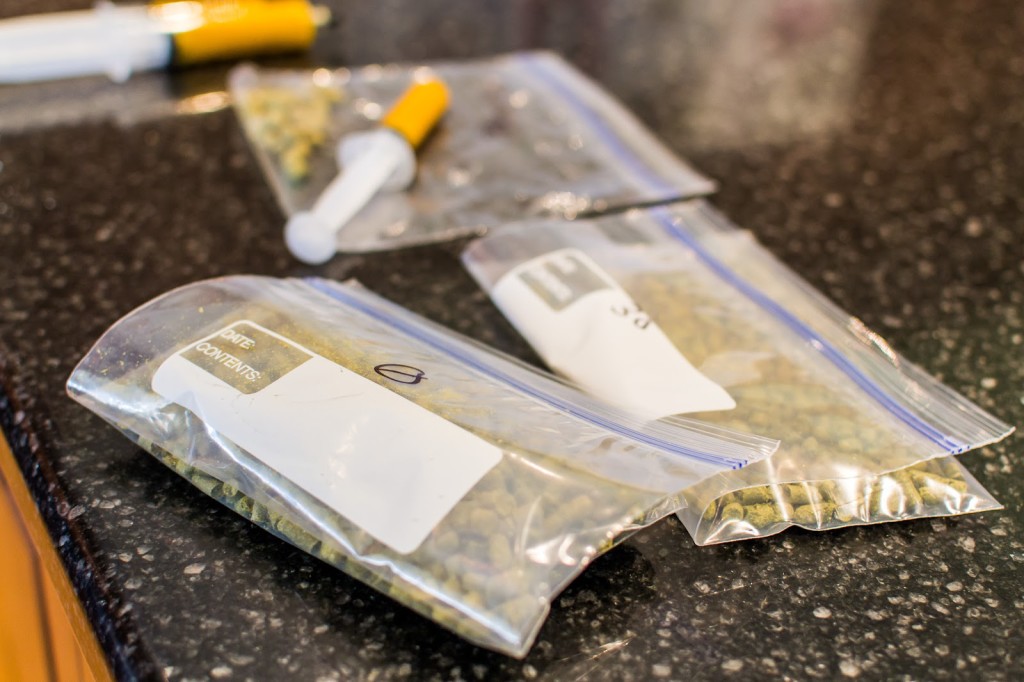 I dropped by the LHBS mid-week to pick up some 001, and then whipped up a 3L starter so it had plenty of time to crash before Sunday. We’ve been so busy lately, that I haven’t brewed anything in roughly a month. It’s nice to finally have a quiet weekend so that I can knock out a batch.
I dropped by the LHBS mid-week to pick up some 001, and then whipped up a 3L starter so it had plenty of time to crash before Sunday. We’ve been so busy lately, that I haven’t brewed anything in roughly a month. It’s nice to finally have a quiet weekend so that I can knock out a batch.
It was an easy, lazy-Sunday brew day. I took my time for once, and had a relaxing afternoon. 75min rest at 145*, then held 155* for 10, sparged, and then boiled for 90min. I chilled to 60F or so, and took 5.25gal into the fermenter at 1.090. Oxygenated for 90sec with pure O2, pitched the yeast, and buttoned up the fermenter. Set the controller to 16.7C on the fermenter fridge, and cleaned up.
Brewed: 02-17-13
Secondary: 02-28-13
Kegged: 03-11-13
OG: 1.090
FG: 1.010
ABV: 10.5%
IBU: !?!!!??
6 gallons
17.25lbs 2-row
12oz CaraPils
6.5oz C40
1lb Dextrose
Mash @ 145* for 75min then 155* for 10min
35ml Hop Extract @ 90
5ml Hop Extract @ 45
10g CTZ @ 45
1.5oz Simcoe @ 30
2.5oz Simcoe @ 0
1.5oz Centennial @ 0
1.0oz Amarillo @ 0
.5oz Chinook @ 0
WLP001 – Cali Ale Yeast – 350 Billion Cells
DH1: .5oz ea: Simcoe/Amarillo/Warrior
DH2: 1oz ea: CTZ/Centennial
DH3: .5oz ea Simcoe/Chinook + .25oz Warrior
DH4: 1oz ea Simcoe/Amarillo
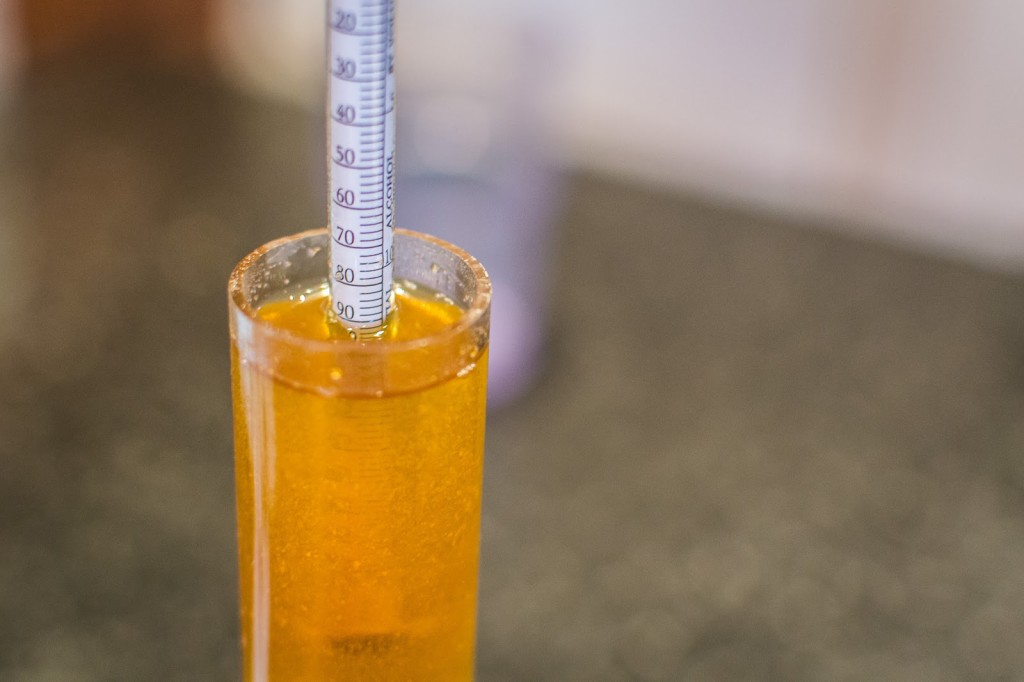 Fermentation took off very fast. I had actually planned to hit the wort with another dose of O2 after 12 hours, but there was already a nice krausen forming. On the 3rd day, I nudged the temp controller to 18C (64F), and then slowly began to raise the temp up over the next few days until I hit 68F on day 7. At one week pretty much all activity ceased, and I tossed the first hop addition into the primary for four days. Then I racked the beer into a keg (secondary), added the second dose of dry hops, and purged with C02. I’m playing around with one of those Dry Hoppers from Stainless Brewing. So far it’s working well, and hop utilization seems good. I can easily pull out the old dry hops, and it’s easy to clean and sanitize. The next two additions went in four days after each other, purging with CO2 every time I cracked the lid on the keg. Lastly, I fined with gelatin, and carbed the beer.
Fermentation took off very fast. I had actually planned to hit the wort with another dose of O2 after 12 hours, but there was already a nice krausen forming. On the 3rd day, I nudged the temp controller to 18C (64F), and then slowly began to raise the temp up over the next few days until I hit 68F on day 7. At one week pretty much all activity ceased, and I tossed the first hop addition into the primary for four days. Then I racked the beer into a keg (secondary), added the second dose of dry hops, and purged with C02. I’m playing around with one of those Dry Hoppers from Stainless Brewing. So far it’s working well, and hop utilization seems good. I can easily pull out the old dry hops, and it’s easy to clean and sanitize. The next two additions went in four days after each other, purging with CO2 every time I cracked the lid on the keg. Lastly, I fined with gelatin, and carbed the beer.
I missed my attenuation mark by 2-4 points. I’m not sure what more I could have done with this grain bill to drive the attenuation lower though. I pitched a very healthy slug of yeast, plenty of nutrients, tons of O2, and I carefully controlled the temperature. I think the only two options would have been to pitch more yeast, or use more dextrose (I’m leaning towards the dextrose). In reality, the difference is barely noticeable considering how big this beer is.
So let’s get to how it tastes:
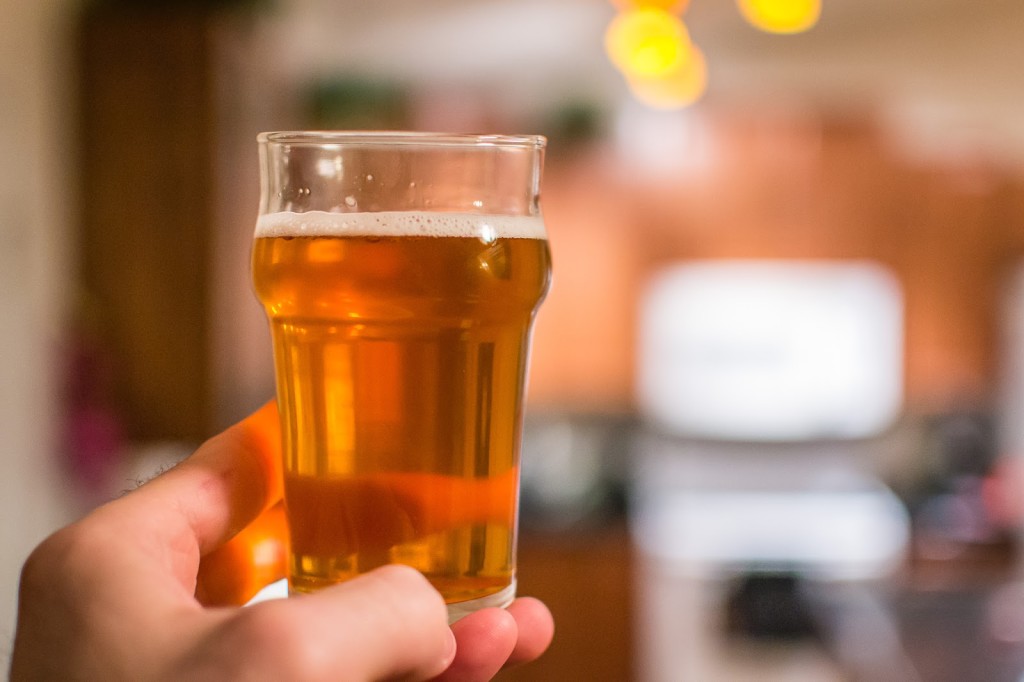 Color and clarity is flipping spot on. This beer is about 1SRM lighter than last years attempt, which looks perfect. The head fades quickly as most high ABV beers tend to do. The aroma is big, clean, massive hops. Tons of pine, tons of citrus, a little dank, a little stone fruit. I want to smell this beer as much as I want to drink it. As best as I can remember, this aroma smells identical. The flavor is massive hop at first followed by some clean alcohol, then a drying bitterness. The alcohol has a sweetening effect that counters the punchy bitterness. All in all, it finishes very clean on the palate. The mouthfeel is medium, bordering on medium-full. I think this is the one area I could have gotten closer to the real thing. I would have liked to have seen this beer dried out to 1.006-1.007.
Color and clarity is flipping spot on. This beer is about 1SRM lighter than last years attempt, which looks perfect. The head fades quickly as most high ABV beers tend to do. The aroma is big, clean, massive hops. Tons of pine, tons of citrus, a little dank, a little stone fruit. I want to smell this beer as much as I want to drink it. As best as I can remember, this aroma smells identical. The flavor is massive hop at first followed by some clean alcohol, then a drying bitterness. The alcohol has a sweetening effect that counters the punchy bitterness. All in all, it finishes very clean on the palate. The mouthfeel is medium, bordering on medium-full. I think this is the one area I could have gotten closer to the real thing. I would have liked to have seen this beer dried out to 1.006-1.007.
So is it cloned? Yes. The flavor and aroma are identical to what I had up in Santa Rosa. I’ll excuse the slightly fuller mouthfeel. Side-by-side I’d bet one could tell the difference between the two, but be unable to distinguish which is the real Younger, and which was the clone. That’s good enough for me.
Would I change anything with the recipe. Ya. a little. I’d use a little more dextrose to help dry the beer out. Probably 1.33lbs or maybe even 1.5lbs. I’d drop the 2-row down to compensate. I might even use a little less Amarillo in the dry hop too. Maybe go with 1-1.25oz, and make up the difference with CTZ. That’s a very, very small change though. This, for all intensive purposes is Younger. For anyone looking to take this beer on, there are three really critical things.
– It needs to attenuate very low
– You need to source very fresh hops
– You have to be very, very careful about oxidation.
My batch this year tastes much fresher and has a much bigger hop aroma than last year’s. I attribute that to the fact that I gassed everything with CO2, multiple times.
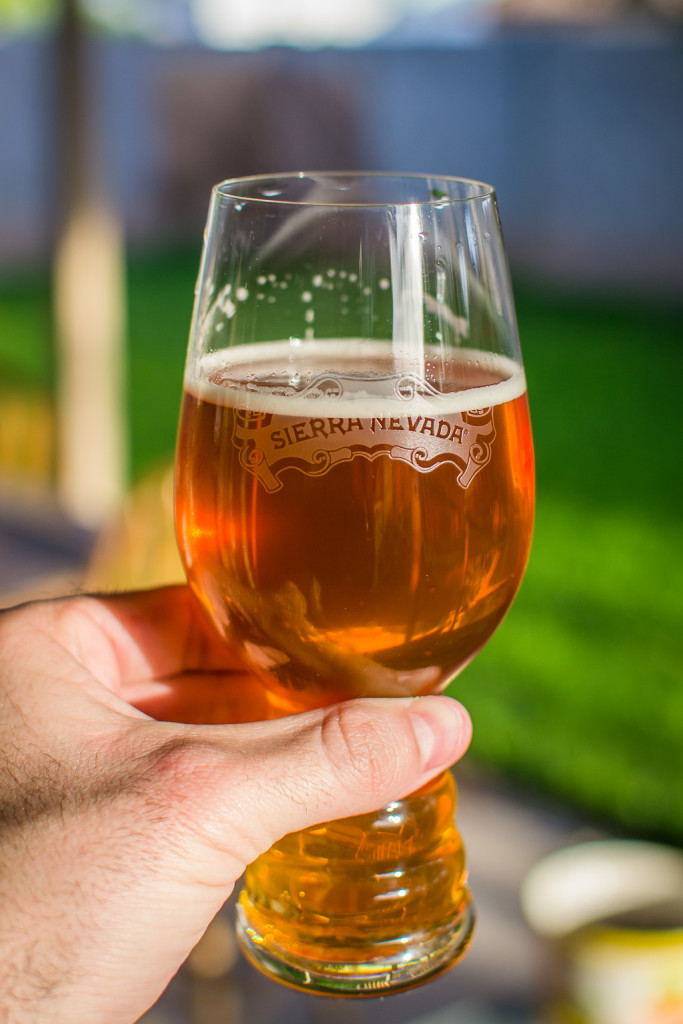 So that’s a wrap. I’ll stake the flag and claim this is definitely the best beer I’ve brewed to date. As such, it’s been very hard to resist drinking this on a nightly basis. This one is highly recommended. Brew it, drink it, enjoy it.
So that’s a wrap. I’ll stake the flag and claim this is definitely the best beer I’ve brewed to date. As such, it’s been very hard to resist drinking this on a nightly basis. This one is highly recommended. Brew it, drink it, enjoy it.
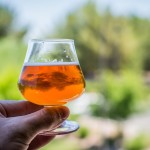
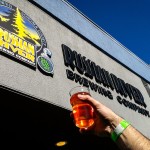
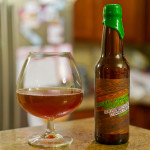
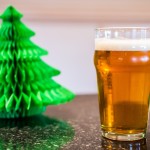
Excellent post as per usual! Do you think there is any chance of reproducing your results with bottle carbonation?
I'd be interested in hearing your thoughts on the stainless dry hopper. It looks quite convenient, but also looks like a pain to completely clean and sanitize. I didn't see any reviews on the website.
Thanks. I would think so. I won't lie, as I think a kegged version will taste better due to less O2 exposure, but it should still turn out excellent.
It definitely works as advertised. I'll take some photos of it on my next hoppy beer. It's much easier to clean than a nylon bag, as its stainless. It's a little harder to sanitize, as it's bigger than a strainer bag. A spray bottle full of sanitizer gets the job done. There's not much else to it =/ it's a giant, easy to clean strainer basket that can be easily fished out of the keg without tying fishing line or something goofy like that.
I am reading the yeast book by Chris White and Jamil right now. Havent finished it yet. But I read a little bit about extremly high abv beers and it said that you really should give it some more O2 after 12hours but not after 18. And also bump the temperature up as high as 25 degrees celsius after 48 hours to really keep the yeast working. By that time most falvor compounds have already been created so it shouldnt affect taste that much. And a bit higher pitchrate does not hurt as well. Awesome post as always man!
I read that as well. Good read. I might read it again, as there were some high-gravity tips spread throughout the book
Yes, Like I said I havent finished it yet. But it seems as though the high gravity tips should all be put in one place as they are a little spread out.
Scott – do you like the dryhop basket over the surescreen over the diptube method?
Never tried one of the surescreens, so I'm not much help there. It works well though. I'm using it to dry hop an Amber Ale right now.
Scott, great post once again! Congrats! I will probably give it a try the next month or so.
Just one doubt: are you using a hop spider with all your hop additions? If so, are you whirpooling with a pump?
Cheers
Nope, I toss everything straight in the kettle. The 0 minute addition I put in a nylon bag, and then I pump the wort back into the bag to collect as much hop matter as I can while I chill the wort.
if i were to convert this to extract would you suggest using dried or lme
Dried. Check out this thread over on Homebrewtalk: http://www.homebrewtalk.com/f12/pliny-younger-clone-332084
It's pretty long, but if you head over to the last couple pages, we have talked a bit about an extract version. User:bobbrews has some good advice mixed in with mine. You should be able to get pretty damn close to this beer if you track down the right extract to use.
Do you recirculate through the bag back in the kettle?
Ya, the bag goes in kettle, and I pump into the bag. Once the wort is cooled, I pull the bag out, and most of the hops come with it.
And do you pump it in a way to create a whirlpool?
Cause I think that sounds like a good idea.
Where do u get your hop extract?
What is your fermentation temp control setup?
Great post, I wish I could try your brew. Question…when you say that you gassed everything with CO2, what do you mean, exactly?
Yakima Valley Hops. I've also purchased it from Northern Brewer — Same stuff.
It's a refrigerator in my garage that I have hooked up to a temperature controller. I tape the temp probe to my bucket. It stays within .5F of my target temp.
I purged the keg (which was my secondary) with C02 several times before racking into it. Then, after each hop addition, I purged the head-space with C02 as well. Basically, every time I opened the keg lid, I purged with C02 after.
Last year I used a bucket for a secondary, this worked much better.
Hi Scott, do you mash out to make this a beer?
Hello Scott.
I just stumbled upon you site as I was following the Heady Topper thread. Great thread…I gotta get me some Conan. What you have done for the home brew community with this site is just awesome. Can't thank you enough. Well done sir!
My question. I have the grain bill for a 12 gallon batch (including the amendments you would use next time) and all the hops. However, and I know its a ton of hops already, what would you suggest in place of the hop shots? I'm having a problem getting them and my grain was crushed yesterday. Brew tomorrow. I have a good variety of lbs. to work with. I was thinking magnum. Your thoughts?
Thanks again for everything.
Thanks, I appreciate it.
For the hops, use anything big. Apollo, Warrior, Summit, Columbus, etc. Whatever the highest AA% your LHBS has, use that. It really doesn't matter much in the end, you're just looking for alpha acids at 90min on this beer.
Double Jack Vs Younger vs Enjoy By? Who's first who's last?
Oh man, that's a tough one. I'd say, Enjoy By, Younger, then Double Jack, but it would depend on my mood on any given day.
I'm nursing the last of this keg. I'm going to be sad when it's gone.
Well I tried my first Pliny the ELDER clone recently, and it came out awesome. Admittedly it's not "cloned" at all, because I didn't have the same hops (from the RR/Vinny clone recipe). So I tossed the clone idea out the window and just used their base malt recipe, with an interpretation of hops fitting for a pseudo-clone. Truthfully, it's probably psychologically easier to do a pseudo-clone, because you know it won't taste the same and you won't worry about it. Also, PtE sets a pretty high standard to shoot for! I'm impressed you got it so close!
Cheers!
al
The folks over at stainless should give you a cut. I ordered one after I saw it on hear. Using it now and it seems slick.
Specific to this brew, when you mention removing the old hops, are you removing them at each addition or leaving in the entire time?
I brewed up your recipe a couple weeks ago with slight variations and cannot wait to try it (currently in the second dry hop stage.) I had a lb of columbus on hand and hate spending money on shipping to get hop extract so I threw in 4oz columbus for the 90 min addition and another oz for the 60 minute. Also I can't get my hands on amarillo so i subbed all the amarillo additions with cascade. I upped the corn sugar addition to 1.5lbs which put my OG at 1.090 and brought my FG all the way down to 1.004. Also i fined with gelatin during the cold crash prior to dry hopping, as I have found gelatin robs a little hop aroma. I hope it comes out close, I know amarillo has a very distinct taste that mine will be lacking but hopefully the cascade will provide some fruitiness to get me close!
Removing them after each addition.
Wow! That's some really sold attenuation, looks like 11.3%. Regardless of the Amarillo, that should be really tasty when it's finished. Let me know the outcome.
Scott, I finally brewed (4/13) my version of PTY.
I was able do import a can of hop extract and some Amarillo to Brazil, so I could finish the hop bill.
The main difference from your recipe is that we don't have american malts. So I had to switch most the malts to Weyermann compatibles (Pilsner as base and a blend of Carared and Caramunich III for the C40 addition).
I've made a nice water treatment and mashed low (148ish) for 90 minutes.
Another thing I considered for a high fermentability was mash thickness. I've mashed thinner(around 1.5 qt/lb) than I usually do (1.10 qt/lb), so the enzymes could work more freely.
I hit OG at 1.088 and pitched 3 packs of US-05.
Lets see how it turns out!
Thanks a lot!
Scott,
1) How many gallons of water do you add for your mash before spagreging ?
2) is it possible to make a 10 gallon batch if so do I double the ingrediants?
3) "I fined with gelatin, and carbed the beer." Can you please explian this proces ?
4) what is the best way to achive clearity ?
5) about how many ML is 350 billion cells?
Sorry for the million questions but I love this beer and loove the fct you have nailed it and i wanat replicate your recipe.
Dave
Oh one more question. Did you use pellets of leaf hops.
Thx. Dave
1. I had to look at my brew-day notes. 6gal of strike water, 4.2gal of sparge water.
2. Absolutely. Just multiply everything by 2x
3. I did a post on gelatin here: https://www.bertusbrewery.com/2012/06/how-to-clear-your-beer-with-gelatin.html
So I add gelatin to the cold keg, and then hook up 12psi of CO2 to let it slowly carb up after 10-14 days.
4. Clarity, in my opinion, is doing a number of small things right that all add up to clear beer. Use irish moss and/or whirlfloc in the kettle to get a good cold break, gelatin does a great job of dropping yeast and some proteins out of suspension, and finally just time in the cold box (cold conditioning).
5. If you are re-pitching yeast, it would be roughly 180ml of thick slurry. Or one vial of yeast in a 3.5L starter on a stir plate.
6. Pellet hops.
7. Be very wary of oxidation.
Scott,
Thank you so much for the great intel and the speedy reply. have agreat day.
Dave
That 4 week dry hop seems to take an awful long time for an ipa turnaround. Anyway, finally kegged up my version and should be ready on my birthday May 14. Will post back with results soon.
Nice! I'm excited to hear how it turned out.
Ya, I sped up the dry hop. I think I did 4 days per addition.
I couldn't help myself from testing a small half carbonated sample. One big difference from pliny the elder (which I have had, unlike pty) is the aroma is much more pine and citrus where in the elder I get huge dank notes. The extra alcohol adds a sweetness to the smell and taste. It really seems much less bitter and dry than the elder which I am loving so far. Can't wait until it's fully carbed and ready to go!
Intents and purposes.
That's awesome. Your tasting notes definitely mirror mine. Drop me another comment when it's fully carbed up. I'd love to hear how it turns out.
Scott, I would just really like to thank you for doing all the work to come up with this recipe! I know this is been years past if it helps anyone don’t use too much dextrose. I made a 7.5 gallon batch and used 2 pounds and FG was 1.003. I should have had more volume. I put 4 packs of safale in.
Now that it is ready I can definitely say this is the best ipa I have ever brewed and the best ipa I have elver tasted. Subbing amarillo with cascade ended up being a good substitution and I'm sure the final product isn't too far off with everything else going on with the hops in this beer. This beer has a heavenly mouthfeel, silky, creamy, oily, with no heat. Thanks for the recipe! Since you say enjoy by is as good as this one I will definitely be brewing that next.
Hey, glad it worked out so well!
I am not one to drink beer every day but you are right it is very hard to resist having this on a daily basis haha
Scott,
Long time reader, thanks for the blog… you have definitely helped me improve my brewing.
Quick question, according to the NB calculator for HopShot, your first 35mL hop extract addition would net an IBU value well north of 100…. can you please tell me what calculator/equation you used, and what your hop extract only IBU contribution was to the overall recipe?
Scott,
Can i ferment a 5 gallon batch in a 15 gallon container (coverted sanke keg) Im concerned about the head space ? when I secondar I purge with C02 but wasnt sure about doing that on primary.
I used the one on Hop Union's website. The one from NB is crap because we have no idea what hop utilization formula they are using (aside from the fact I found it wayyyyy off.)
I treat every 1ml of hop extract as 2AAU, so 5ml hop extract = 10AAU ~ 1oz of a 10% AA hop.
I'd think you'll be fine so long as you don't open the fermenter until you transfer the beer to secondary. Primary fermenation will off gas more than enough C02 to completely purge the headspace many times over.
Thanks Scott. Just brewed the batch yesterday… man that hop extract is something else. My wort almost looked like hop soup, with visible oil on the surface. Also, I just noticed I neglected the CaraPils in my grain bill, I just used 2-row and 40l. Not intentional, but hopefully that mistake doesn't impact the flavor too much. Also, I used WLP090 (San Diego Super) because I love that yeast: very similar profile to 001 but ferments ridiculously fast.
Scott,
What was your temp from day 11-21 ? secondary)
Dave
Brewing this tomorrow but with Conan yeast instead of US-05…very excited.
p.s.-where ya been at?!
You'll be fine without the carapils, just expect a slightly drier beer with a little less mouthfeel. WLP090 will work great in this beer.
Very nice!
Ya, I've been sort of MIA for the past 1.5-2 months. Between planning a wedding, looking for a new job, and starting a new job, I had to push brewing off to the side for a little bit.
I have some free time, and an empty kegerator, so I'm busy brewing again. =)
Room temperature.
Excellent!
I brewed this recipe to the T yesterday, except I only got 72% efficiency so my OG is at 1.079. Would you recommend that I add some more dextrose while its fermenting to boost the abv up to where it is supposed to be or would it be best to leave it alone and just have a PTY that's ~1% lower in ABV. I don't think I really care either way, I am not trying to clone the taste exactly because I've never tried PTY, I am just trying to make a delicious beer.
I brewed your recipe today. It looks like I got VERY close to 1.088 (my kinda crappy hydrometer read 1.086 at 75F). I missed the note about putting the flameout hops into a sack. By the time I chilled and transferred to the carboy, fully half the volume looked like trub. I sanitized a bottling bucket and nylon sack, racked through the sack into the bucket and squeezed the crap out of the hop residue. Once I pitch my yeast starter, I should be right at 5 gal.
Your recipe says a 6 gal batch. Should I cut my dry hops by ~17% to accommodate? Cheers and thanks for a great website!
You could add a little more dextrose, or just go with it. I think it would turn out great either way.
Nice! I wouldn't cut the dry hops. I say 6 gallons, because that's my post-boil volume. I lose some wort going from the kettle from the fermenter, and then I lose a little more going from the fermenter to keg. And in this beer's case, I lose even more due to dry-hop absorption.
My point being, you aren't far off.
Scott, did you let the hops steep in the wort at flameout, or just start chilling immediately?
Planning on brewing this sometime within the next couple of weeks, hopefully!
I did a 20min steep after flameout. I usually do at least 10-15 for any beer with a decent-sized flameout addition. I just feel like I get more from it.
Scott,
So I under pitched and ended up with stuck fermentation at 1040 but I didn't catch it till after the 2nd dry hop addition. I got fermentation going again by pitching a starter champagne yeast (per white labs). My question is should I restart the dry hopping process from DH-1 or continue where I stopped off ? Thank you.
Dave
Great, thanks.
Also, I don't have access to Warrior hops. Since you've actually had PtY, do you have a sub recommendation? CTZ, Nugget? Or, just ignore it altogether?
Ok, so finally got around to tapping this bad boy. First, because I only have a 5 gallon mash tun, I made up some of the grain bill with light DME, which of course drove the fermentability of my wort in the wrong direction, so I finished at 1.016 vice the target 10 points (my color was also off, which I think is the DME). So this beer ended up being like 90 min with west coast hops, but it was still by far the best IPA I've ever brewed! Thanks for your hard work with this recipe. I'm brewing this again, with a larger mash tun, not forgetting the CaraPils and using the 2013 hop harvest to get the freshest hop profile possible.
The Warrior really threw me for a loop, but I suppose it adds a complexity. Good Warrior is a little citrusy and a little resiny to me. Still pretty mild though. Nugget would be a great substitute, especially considering we're not talking about a large percentage.
My best guess on how it ended up in this year's Younger is: Vinnie probably got a batch of fantastic smelling Warrior, and decided to add a little to younger. I doubt it came from the mindset that younger was missing something and Warrior filled that void.
That's just my best guess, as I do that all the time. "Oh, this smells really good. I'll pepper a little into this recipe for giggles…"
I'd say continue where you left off, or just split the difference, and maybe add half of DH1 again. Hopefully the champagne yeast gets you down where you need to be =)
Scott, I'm looking forward to trying this recipe. Though, I think I want to try your Stone "Enjoy By" clone first 🙂 Anyway, have you thought of dosing it with sugar after fermentation starts to help get it to attenuate down further? I know that is a technique some brewers use (I believe it's quite common in Belgian beers). I am thinking of making a simple syrup with corn sugar for 2 reasons: 1) it will pasteurize the mixture, and 2) makes it easier to add it as a liquid.
Josh
Easily the best hoppy beer I have ever brewed! My effeciancy was a little low but got it to 9.8 abv. Brewed it for my Dads 55th birthday, and he is really enjoying it. Thanks for all you do here.
That's awesome, glad it turned out well!
I have been brewing for 2 years, but have never attempted a double IPA. Your instructions call for 40ml of hop extract, so if they sell in 5ml syringes, that meants it would require 8 hop shots for this recipe? Just making sure that there is indeed 40ml of hop extract in this one…I wouldn't want to overdo it for my 1st batch. Thanks!
Ya, that's correct. It's a lot. To be honest, you could cut some of that extract for bittering hops, and I think it would be really hard to notice the difference. Hop extract is 2AAU per 1ml. So you need 70AAU at that 90min addition. you could add like 20ml of hop extract, and make up the remaining 30AAU with 2oz of like CTZ or Warrior if you like.
Thanks, I will use the 40ml as stated in your recipe, just wanted to be sure.
Hi Scott, thanks for a great recipe. Easily, one of the better brewed crafted beers out there. I'm glad I did enough research and stumbled up your blog here. A few thing were not clear to me reading through your blog. Near the top of the blog you mention you ended up with 5.25 gal going into the fermenter, but a few lines down you mention 6 gallons (in red text). That threw me off a bit. I suppose the real question I want to ask is how much pre-boil volume did you start off with?
To summarize my questions:
What was your in kettle pre-boil (wort) volume?
What was your post-boil volume going into the fermenter?
Thanks for your efforts, and I look forward to following you.
Ron
Scott, I want to hit nail the OG. Hence, asking about your pre-boil volume. I've gathered enough from your blog here but pre-boil volume will help tie up loose ends. PTY is one of the greater beers out there, and I'd Iike to ensure I nail all information down before moving ahead. Thanks for your time.
-Ron
Hi Scott,
Just wanted to say thank you for a great blog. I made my first ever batch of beer yesterday, and it was this recipe. Probably should have gone with a simpler one for my first attempt, but screw it. Everything seemed to work out pretty well, with only (presumably) minor problems – I had to boil a bit over 90 minutes (probably an extra 10-15 minutes) to get the OG to 1.089, which then meant that I only had 4.3 gallons going into primary.
One question that came up for me during the process was this: what water to grain ratio do you use for the mash? I did 1.5 qt/lb, using a 10 gallon Igloo as a mash tun, and added boiling water to get the temp up to the final 155*, but I ended up with the tun so full I couldn't put the lid on completely. Would the mash work just as well with a lower ratio, maybe 1 qt/lb?
Thanks,
Josh
I'm probably way too late, but to be honest, I forget what the pre-boil volume was. Post boil was about 5.5gal, as I left about .25gal of crap in the bottom of the kettle.
I'd say use your experience with 90min boils to anticipate about 5.5gal at the end. Hope(fully) it turns(ed) out well for you.
I usually do about 1.5qt/lb, but for really big beers like this, I'll cut it down to 1-1.25. So to answer your question, yes, that's fine.
Scott I commented about brewing this in Oct/Sept for my Dad's Birthday, and wanted to give an update: I made the wait here in So-Cal for the Younger today and you nailed it 97% percent. The other 3% I chalk up to differing hop schedules year to year or maybe a difference in the quality of hops I get from Yakima because the body is near perfect from my memory. This is absolutely there in my opinion, such a good clone. Ever looked into a Lagunitas Sucks Clone?
That's awesome! It's always good to hear when a recipe turns out well for someone else! I really haven't looked much into a Sucks clone, but I do love that beer.
Scott,
What batch size did you use for this beer? What was your pre-boil volume and your volume after the boil? I typically need to brew 7 gallon batches to get 6 gallons of clear wort out of my boiler due to my setup. I'm looking forward to trying to brew a version of this beer.
Thanks,
Adam
Scott,
A follow-up question; do you think the attenuation issue is due to the additional of crystal malt? I've read some of Vinnie's interviews on this beer, and I swear he says that they don't use any crystal in the Younger. Perhaps replacing it with straight base malt could help it drop a point or two.
Where do you get your mini nonic glasses!?!??!?
Since I don't have a way to do a 2 step mash at 145 and then 155, do you think the best way to do this is to just try and hit 150 for the full 90?
This comment has been removed by the author.
Hey Scott, It's been a few years since I had the Younger. I live 8 miles from RRBC but can't do the line. My wife was able to get in on it when the pub down the hill tweeted that they were tapping a keg of Younger. Sadly I was at work. So, all my ingredients are lined up. Now I need a slow weekend. Just trying to decide whether to mash in my 8 or 15 gallon tun. Seems like a lot of grain for the 8 gallon. Thanks for doing all the footwork & hope your new job is working out!
S
Hi Scott, just got one question. The temp that you are controlling is a temp inside a fridge or beer temperature? Fermenting beer got about +2/3C temp.
Greetings from Poland!
Greetings from Israel!
I'm brewing this as I write the post.
This looks very promising, the only thing I did different is lowering the IBU because I can't get Hop Extract here.
So I am using 60g of Columbus instead of the Hop Extract (I should probably use more, but that's already above 200 IBUs).
Hey Scott,
Thank you very much for the recipe. I have a yeast starter going as we speak. Only question I have is when to add the dextrose? Did you add it in the mash, or in the boil? If in the boil, at what point did you add it.
Thanks,
Dan
During the boil. I usually add it with around 30 or 15 minutes left, but it's not super critical.
Scott, this recipe is amazing!
Probably one of the best beer I have ever brewed!
Thank you so much!
I brewed this recipe a month ago, and am tasting the results tonight. It is incredible. Like Eliran above, I want to thank you for blogging and sharing your recipes. I've been dreaming about brewing a beer like this ever since I discovered the joys of homebrewing two years ago. I have learned massive amounts of useful info from this website, and it completely blows my mind that I am sitting here drinking this beer now, having it taste the way it does. Thank you thank you thank you.
That's always awesome to hear!
Glad it worked out well. Happy brewing!
Hi Scott,
I totally fugged on my batch of this I tried to make. Had a really hard time doing the step mash with the equip I had at the time. Then sucked up a ton of nasty sanitizer water when I cold crashed so had to dump it.
I'm going to do another attempt at this again now that I have a totally new setup and have a few questions.
1) I didn't see any kind of mash out when you sparged. Do you raise temps of mash to 170 before you start sparging?
2) What temperature of water are you using to sparge?
3) Do you do any water treatment? I don't do anything yet except run it through a charcoal filter, and add a campden tablet in the sparge water tank, and one in the mash water tank while it's heating up.
Thanks,
Dan
Just curious – how do you get to 35ml of extract at 90 minutes to introduce 70 IBUs? When I read charts for HopShots and other online extract calculators I come up with 8.2ml. Am I doing something wrong or is the 35ml admittedly overkill? I plan to brew this recipe this weekend and will likely substitute 4-5oz of Columbus for the extract. Thoughts?
So, you only use 7.75lb 2-row? Wow, I don’t understand how this can work considering the Brewers Friend website has THIS as the grain bill for a 6 gal batch.
17.25 lb American – Pale 2-Row 37 1.8 86.7%
6.5 oz American – Caramel / Crystal 40L 34 40 2%
12 oz American – Carapils (Dextrine Malt) 33 1.8 3.8%
1.5 lb Corn Sugar – Dextrose 46 0.5 7.5%
So, what gives? I want to try this really bad, but this doesn’t seem right.
Ya, that’s my recipe on the Brewer’s friend website, or a recipe someone lifted from my site.
You’re correct though, it was just a typo. I must have missed copying the ‘1’ over when I moved to the new website last week. It is 17.25lbs. I fixed the typo. Good catch!
Where did You find to buy hop extract?
Yakima Valley Hops sells extract by the can or by the syringe.
Hey Scott,
Thanks for all the hard work you’ve put into this blog – it’s been invaluable to me on my quest to master the IPA/IIPA. I brewed this PtY clone recipe with a little more dextrose (1.33lbs as you suggested). I’ve been having a VERY slow fermentation & was wondering if you’d have any fermentation tricks with these high gravity IPAs.
Some info: with an OG of 1.087, I pitched an estimated 528B yeast cells (350mL starter 1st step with WLP001 on stir plate, 1/4tsp yeastex; pitched into 3L 2nd step starter w/ 1/2tsp yeastex; cold-crashed, decanted). Oxygenated wort with pure O2 for 90 seconds at 5-8psi, pitched at 21C and added to ferm. chamber, which brought it down to 18.5C. Tried to oxygenate after 12h, but after 15 seconds the krausen started coming out. Very active in 1st 36h, then slowed; after 7 days, SG 1.052 (temp raised to 20C); after 12 days, SG 1.028; after 17 days, SG 1.017 (temp raised to 20.5C). I pitched more yeast on the 7th (6g US-05).
Any suggestions to ensure better/quicker fermentation next time?
I’m wanting to try to brew this but am unsure of which extract I need to purchase. Any help would be appreciated.
Thanks
Any “Pale” malt extract should work.
Drop OG to 86 points and finish at 8 points. That will leave the beer at ~10.25%ABV. Which according to Vinnie is the sweet spot for Younger currently . It’s relatively easier to finish lower if the beer starts lower from the start. Sure, a healthy volume of yeast, O2 and Dextrose helps but starting low to finish low is another element to add to the arsenal of squeaking out the last couple points. Almost overly dry is what Younger is all about. 10 points or above doesn’t do it.
Thanks for the inspiration.
Cheers!
Great recipe – thanks. A couple of questions on your dry-hopping process.
(i) What is the rationale for 4 stages rather than throwing all the hops in at once?
(ii) Why the 1st round in the fermentor and the 2nd – 4th in the keg?
Thanks again.
I made this and holy crap is it good. Thanks for sharing it.
My tweaks:
15.5lbs base malt (OG 1.086, FG 1.004, 11% ABV)
2.5 Sulfate/Chloride
2 11g packs US-05, hydrated. Gave it a second hit of O2 12 hours after pitching.
Dry hopped for 4 days, all at once in a keg (bag), and prior to putting it on gas.
Drink it fresh!
Definitely will brew it again. Oh so tasty and an ass kicker.
I’ve never had the real PtY, but if it is better than this I would be shocked.